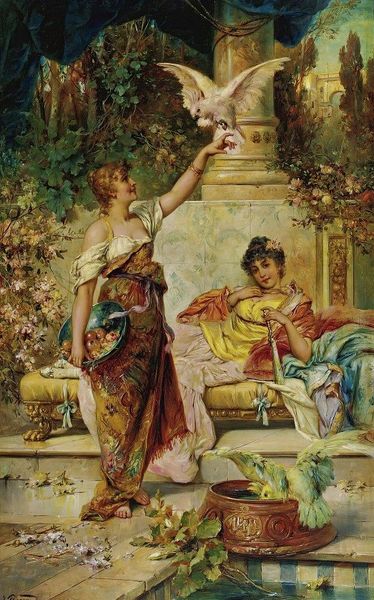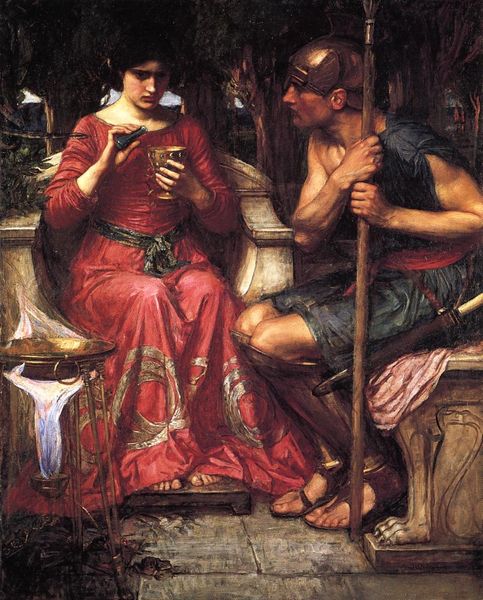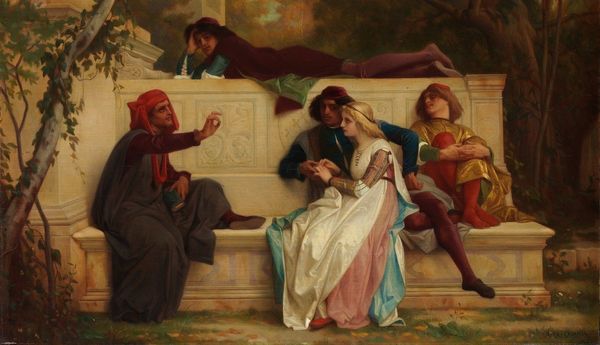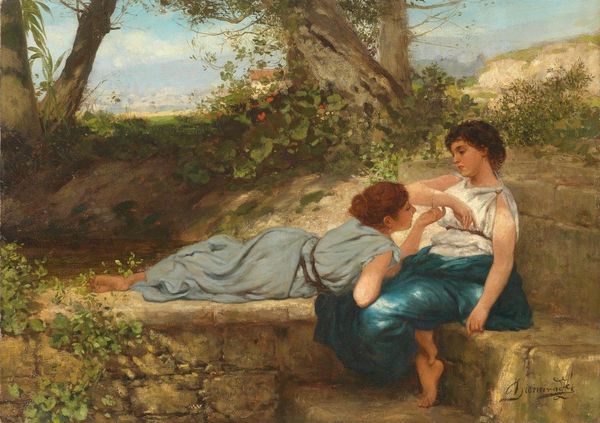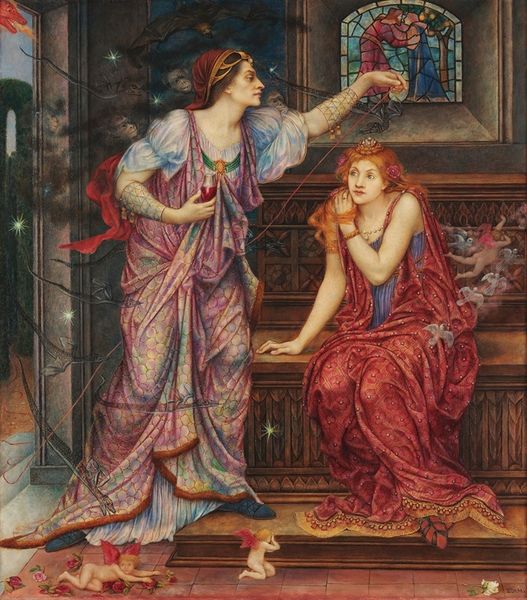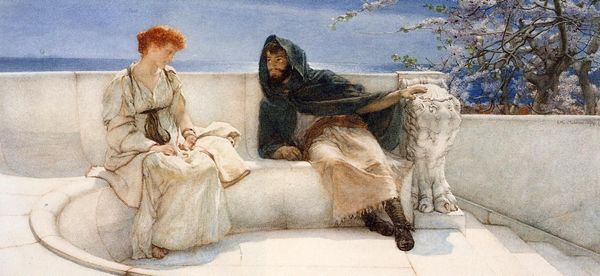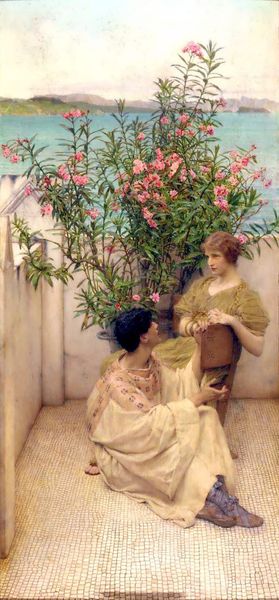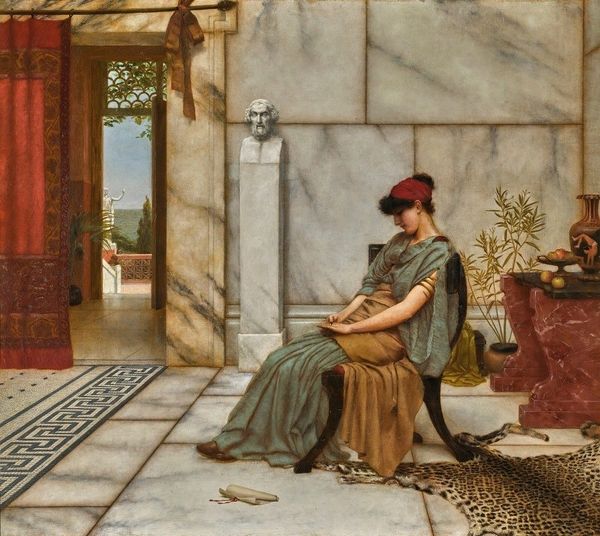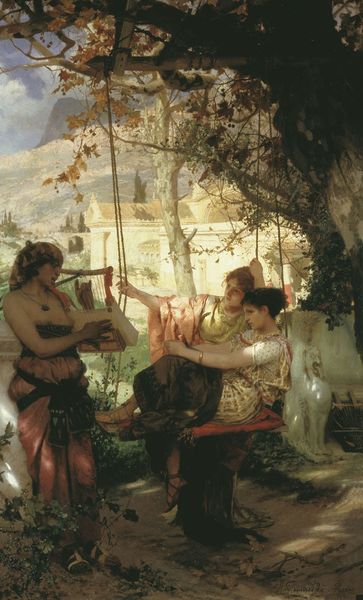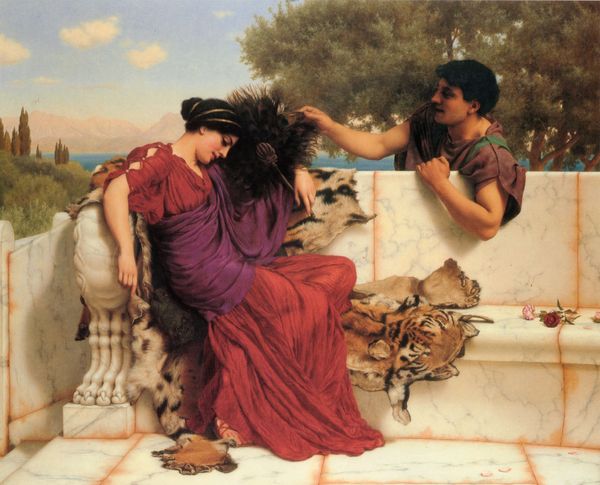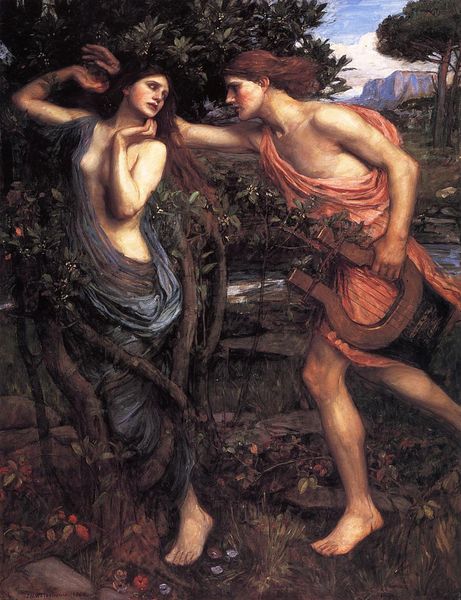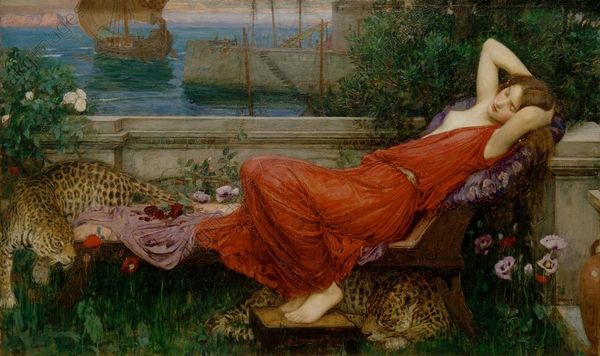
Copyright: Public Domain: Artvee
Editor: So, this is Edward John Poynter's *Helena and Hermia*, painted in 1901 using oil. I’m struck by how calm the atmosphere feels, like a still moment captured from a play, perhaps? How do you interpret this work? Curator: Indeed. And it's useful to recall that Poynter, as a keeper and interpreter of cultural memory, often used classical themes to convey emotional complexities. Note the figures themselves. Their gestures are restrained, almost ritualistic, which calls attention to their headbands: simple and timeless adornments signifying restraint and reason within the Neo-Classical aesthetic. What might these headbands suggest to you about the women and the story? Editor: I guess it's a bit about showing their intellectual power and dignity. Like symbols of elevated social standing in ancient times? Curator: Precisely! Furthermore, consider the spools, needles and textile. What might the significance of clothing and crafting be? Is this work solely interested in the feminine domesticity of ancient cultures, or is there a broader human element? Editor: I never considered the yarn. Hmm, I see it now… Perhaps the threading is a visual metaphor, illustrating life’s intricacies, like destinies interwoven. I’m beginning to grasp the importance of visual storytelling through objects. Curator: Yes. Everyday tools become a part of understanding this historical allegory. The threads trailing behind them create their destiny. Also, consider how his handling of light enhances our reading of the psychological and emotional intensity. I believe his control of light guides us. Editor: Thanks. Seeing the world of symbols around this art changed the narrative's core! Curator: That’s right: cultural symbols are all about how we learn about memory over time.
Comments
No comments
Be the first to comment and join the conversation on the ultimate creative platform.


